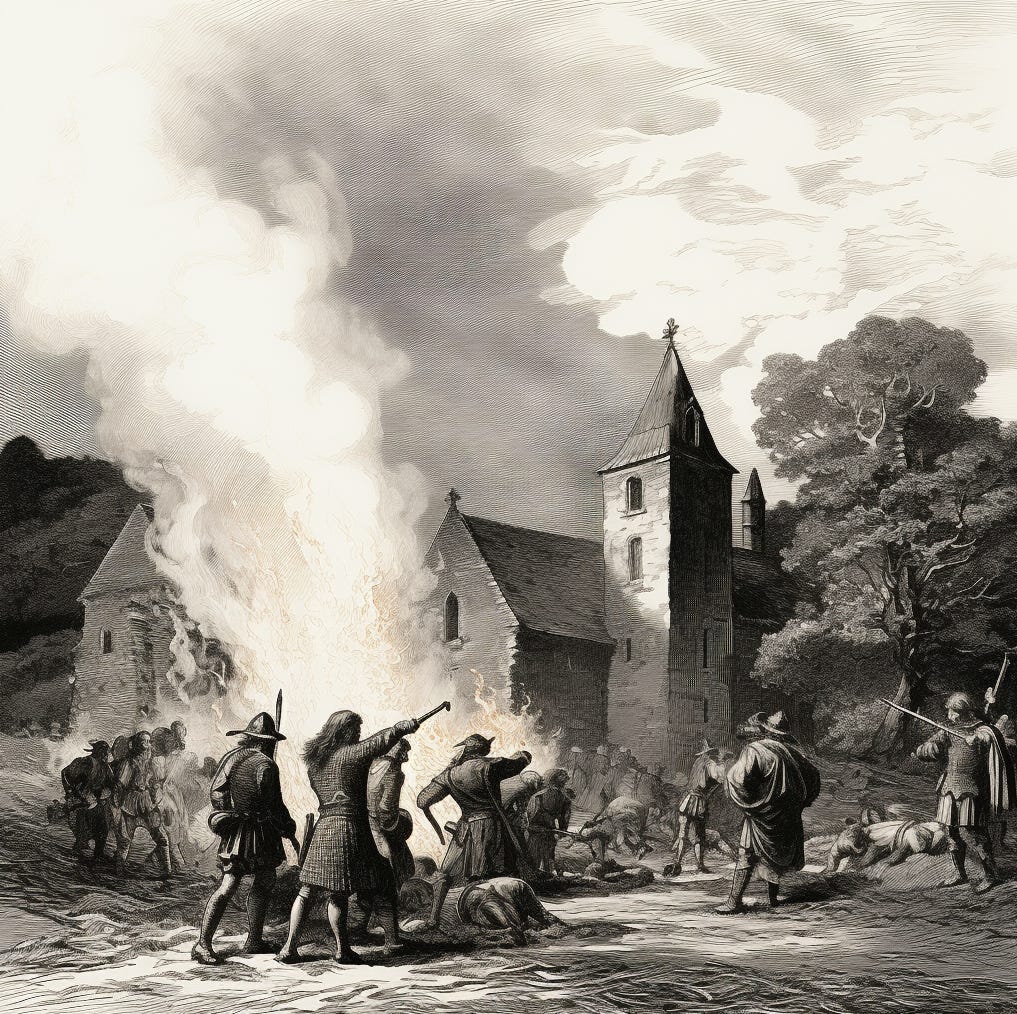The Massacre of Monzievaird, a Violent Climax of the Drummond and Murray Feud
Scotland's history is marked by tales of clan feuds, and among them, the Scottish Highland Massacre of Monzievaird stands as a haunting testament to the violence that once gripped the Highlands. This heart-wrenching event unfolded in the late 15th century or early 16th century, its timeline obscured by the passage of centuries. It was a violent climax to a long-standing feud between two prominent Scottish families, the Murrays and the Drummonds.
The Seeds of Discord: A Clash of Interests
The origins of the Monzievaird massacre can be traced back to a bitter dispute over the stewardship of Strathearn. William Murray of Tullibardine lost this prestigious position to Lord Drummond, setting the stage for a long-standing family feud. Despite their marital ties, the Drummonds chose to evict the Murrays from their lands. Adding to the turmoil, George Murray, the abbot of Inchaffray Abbey and a member of the Murray family, faced hardships at the hands of the Drummonds. These simmering tensions would soon erupt into violence.
Read the new article from our daily premium feed : The Hungarian Hero: Clan Drummond's Scottish Saga
Brutal Tax Assessment: The Catalyst for Conflict
The turning point in this feud came when George Murray attempted to assess taxes, known as teinds, on the Drummond lands of Monzievaird. This seemingly mundane task was entrusted to the Murrays of Ochtertyre. However, what followed was anything but ordinary. The tax assessment was carried out with such brutality that it pushed the Drummonds to the brink of retaliation. The ruthless manner in which the Murrays executed their duty served as a spark that ignited the powder keg of animosity.
The Battle Unfolds: A Clash of Clans
In response to the tax assessment and the accompanying brutality, David Drummond, the second son of Lord Drummond, took matters into his own hands. He gathered a formidable group of retainers and embarked on a mission to forcibly evict the Murrays from Ochtertyre. The Murrays, forewarned and prepared, put up a staunch defense. However, the tide of battle shifted dramatically when two other clans, the McRobbies and Faichneys, cast their lots with the Drummonds. This alliance tipped the scales, forcing the Murrays into retreat. They made their last stand at Knock Mary, where many met their tragic end.
The Arrival of Duncan Campbell: A Vendetta Renewed
The story took another dark twist when, as the Drummonds were returning to Drummond Castle, they crossed paths with Duncan Campbell of Dunstaffnage and his clan members. Campbell harbored a deep-seated grudge against the Murrays, stemming from the murders of his father-in-law and two sons by the Murray clan in the past. With his vendetta rekindled, Campbell persuaded the Drummonds to continue their relentless pursuit of the Murrays.
The Tragic Turn at Monzievaird Church: A Desperate Refuge
As the beleaguered Murray survivors sought refuge in the church at Monzievaird, their hopes for safety were dashed. A fatal arrow, shot from within the church, claimed the life of a Drummond outside and exposed the Murray's hiding place. This single act not only sealed the fate of those within but also intensified the brutality of the retaliatory strike. The Drummonds collected brushwood and set ablaze the thatched and heather-roofed church, resulting in the death of most Murray men inside or as they desperately tried to escape.
Legacy and Remembrance: Lessons from a Dark Chapter
In the wake of the massacre, authorities intervened. This led to the arrest and subsequent execution of David Drummond and Duncan Campbell of Dunstaffnage, marking a somber end to the bloodshed. The Monzievaird parish church, once a witness to the horrors, was later demolished, leaving behind only a memorial stone and a cairn to solemnly mark the site. To this day, the exact number of Murray casualties remains a matter of debate, with varying accounts painting a grim picture.
The Scottish Highland Massacre of Monzievaird stands as a poignant chapter in the annals of Scottish history. It serves as a stark reminder of the devastating consequences that can arise from long-standing feuds and vendettas in the Highlands. As we look back on this dark episode, we honor the memory of those who lost their lives and reflect on the enduring importance of peace and reconciliation in our shared history. The echoes of the past continue to resonate, urging us to strive for a more harmonious future.





